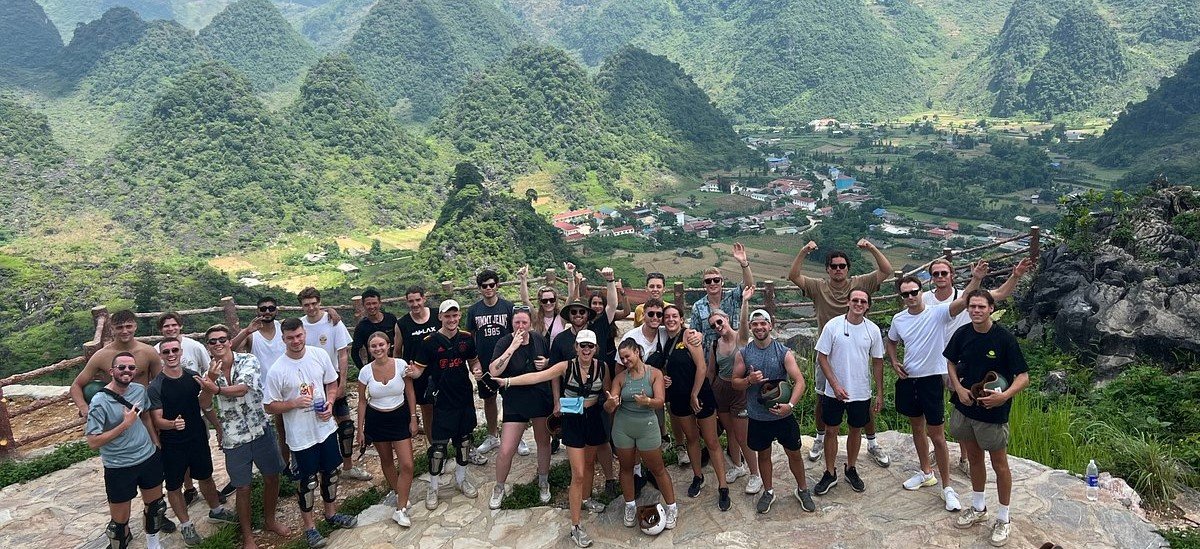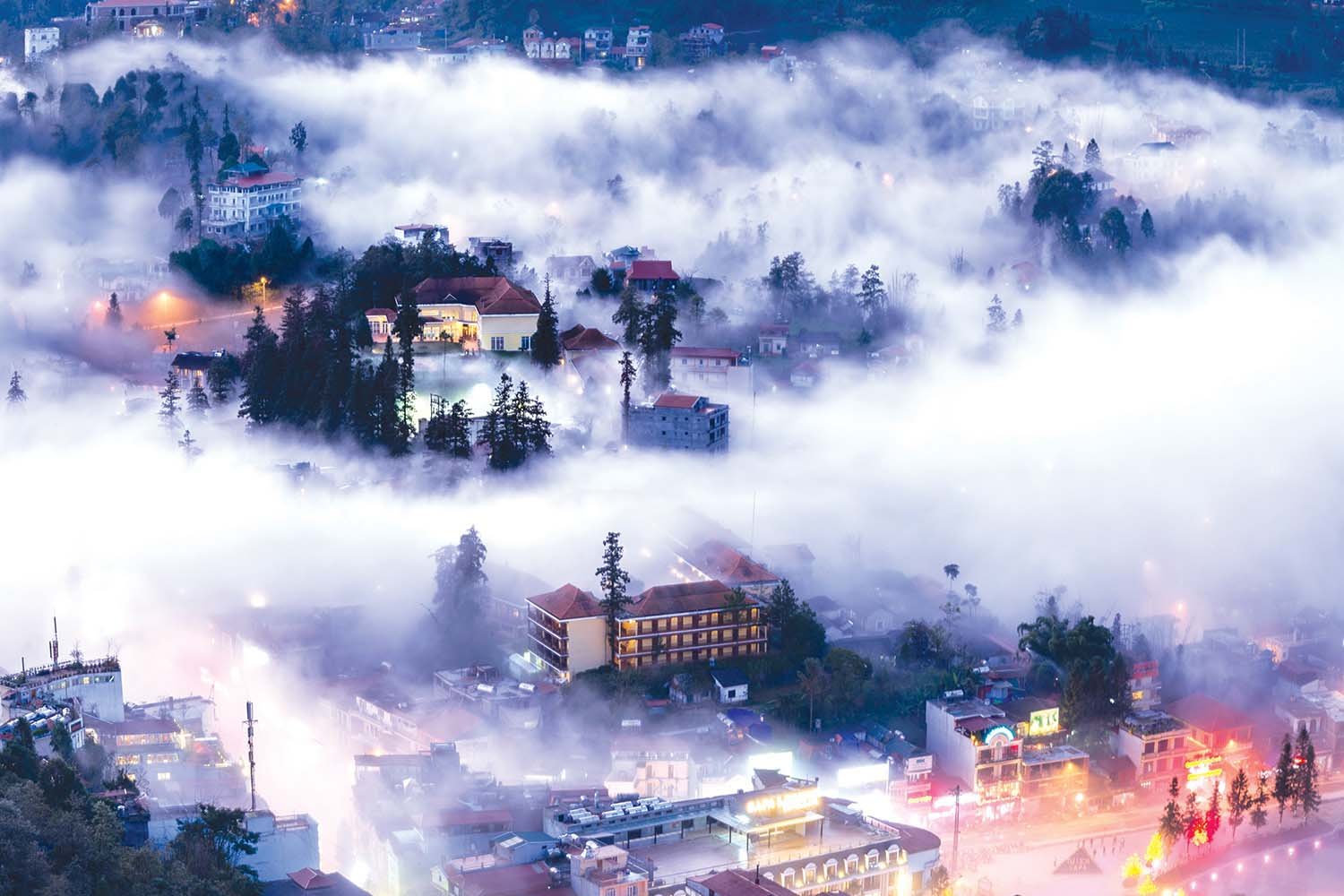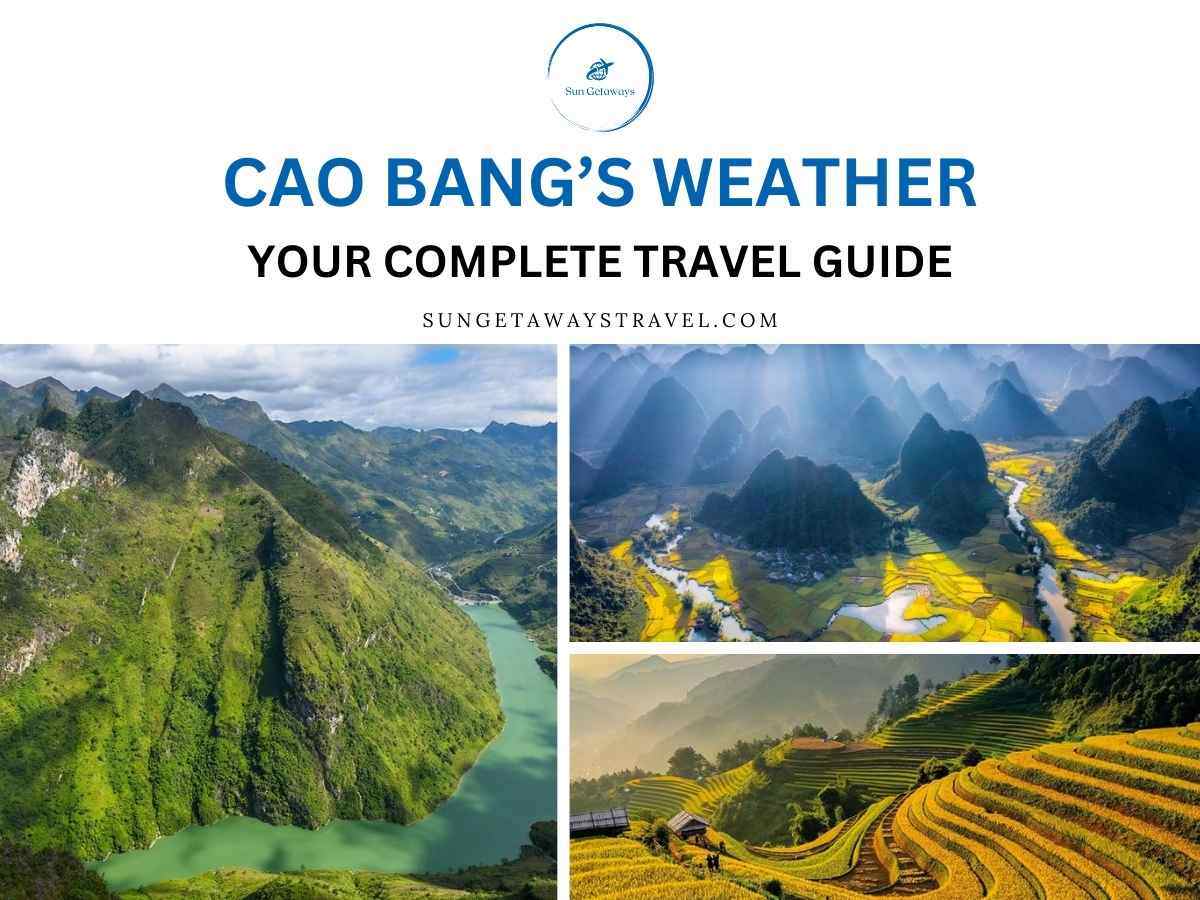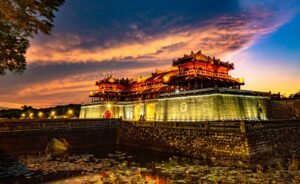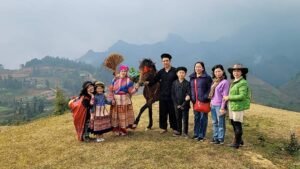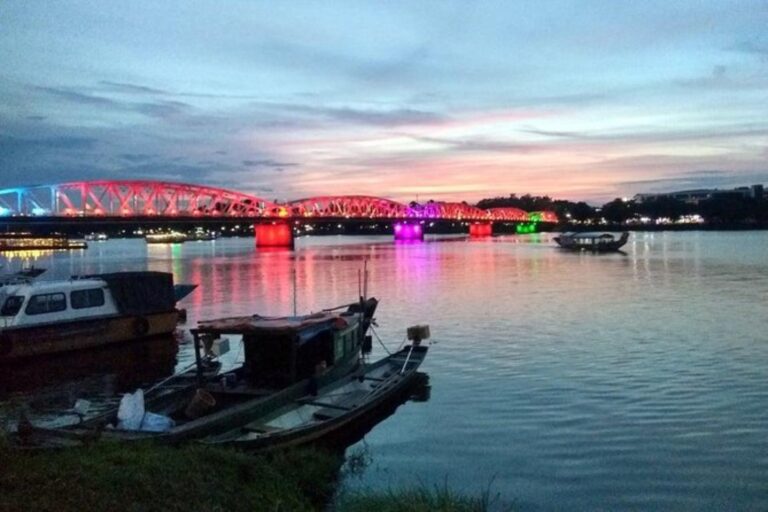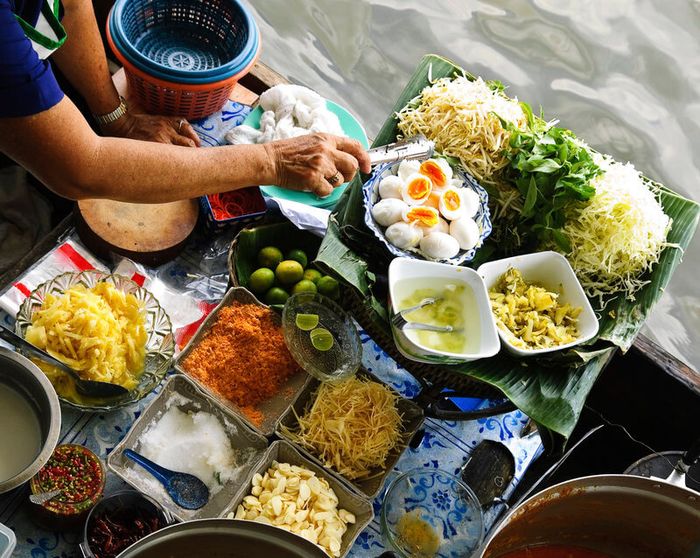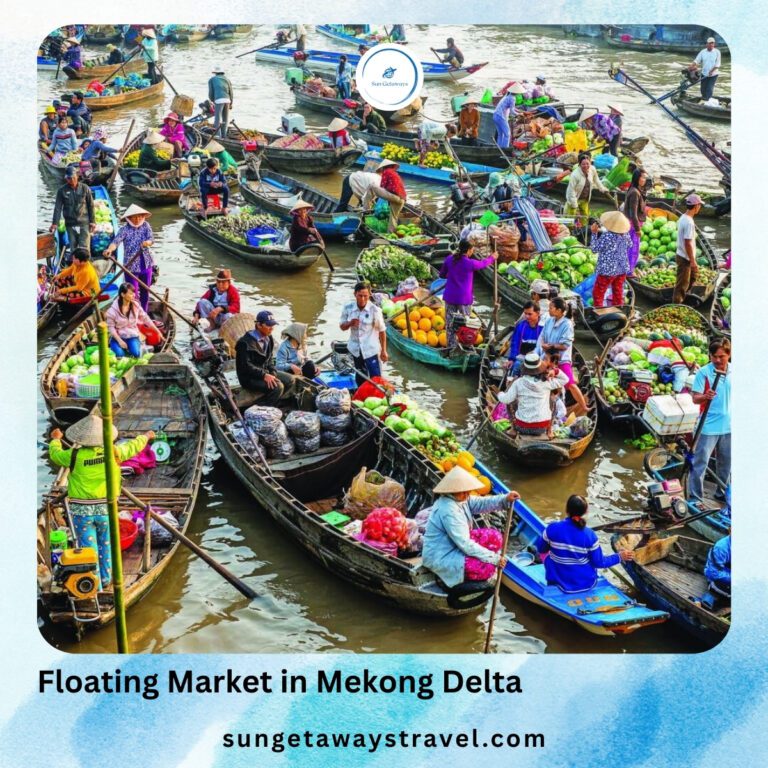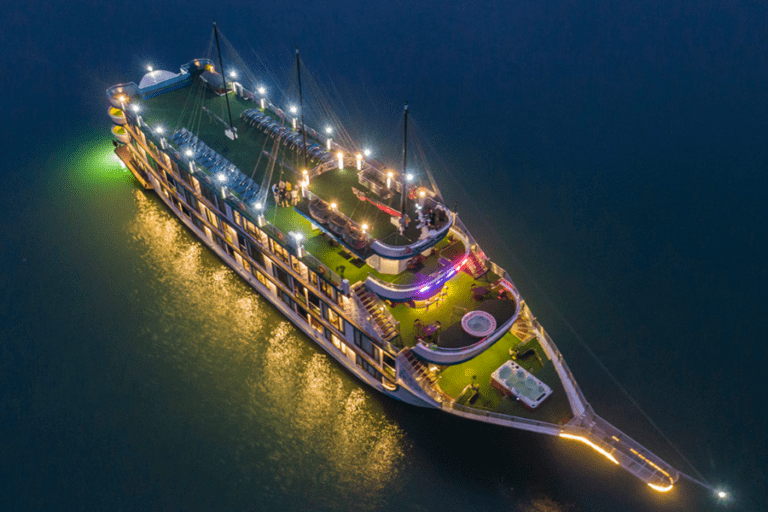Cao Bang’s Weather: Your Complete Travel Guide
 PhamDuong
PhamDuong Cao Bang’s weather is one of the most critical factors for travelers planning to explore this scenic mountainous province in northern Vietnam. Understanding the climate, rainfall patterns, and temperature variations allows tourists to choose the best time to explore natural wonders like Thac Ban Gioc waterfall, Pac Bo cave, and the surrounding forests. The province features a diverse climate influenced by altitude, latitude, and monsoon patterns, making weather knowledge crucial for safe and enjoyable trips. This guide provides a detailed Cao Bang weather by month breakdown to help visitors plan activities, sightseeing, and outdoor adventures.
1. Overview of Cao Bang’s Weather
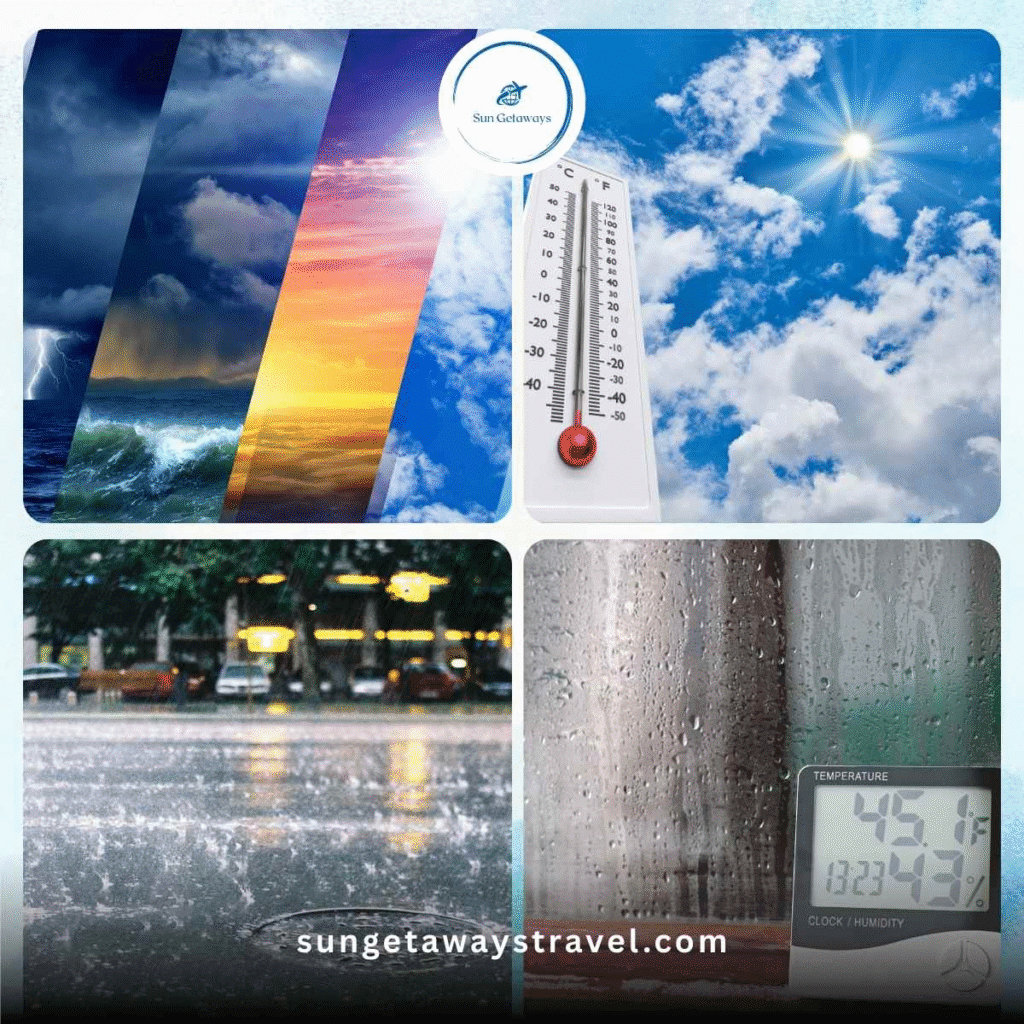

Cao Bang’s weather is shaped by its mountainous terrain and tropical monsoon climate, resulting in distinct seasons and temperature variations.
- Climate Type: Subtropical highland, with moderate temperatures and high humidity.
- Annual Average Temperature: 15–22°C (59–72°F).
- Rainfall: Heavy during summer (June–September) and light during winter (December–February).
- Humidity: High year-round, typically 80–85%.
Seasonal Summary
Each season in Cao Bang offers unique experiences, impacting travel plans and outdoor activities.
- Spring (March–May): Mild temperatures, occasional showers, blooming flowers.
- Summer (June–August): Hot, rainy, and humid; landslides possible in highland areas.
- Autumn (September–November): Cooler, less rainfall, ideal for trekking.
- Winter (December–February): Cold, foggy mornings, occasional frost in high-altitude areas.
Impact on Tourism: Travelers should match activities to seasonal weather conditions. Trekking, waterfall visits, and photography are best planned according to temperature, rain, and fog conditions.
Planning a trip to Cao Bang? Learn the best seasons for trekking, waterfalls, and photography in our Northern Vietnam Trekking guide.
2. Cao Bang Weather by Month
Understanding Cao Bang weather by month allows travelers to plan precise itineraries and choose activities safely, avoiding the risks of heavy rainfall or fog.
2.1 January – March
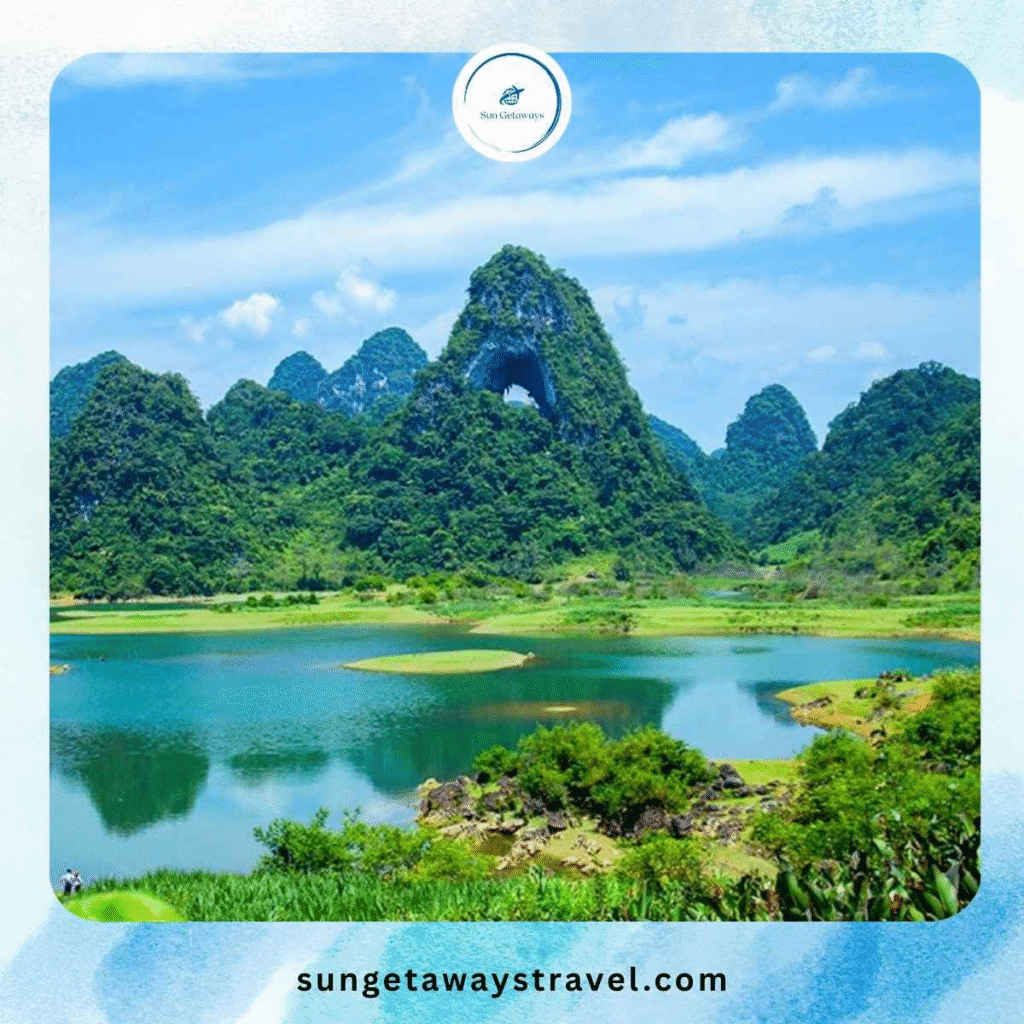

The early months of the year bring cool temperatures, misty mornings, and a tranquil atmosphere perfect for sightseeing.
- Temperature: 12–18°C (54–64°F)
- Rainfall: 40–60mm per month
- Humidity: ~82–85%
- Weather Features: Foggy mornings, occasional light rain, mostly dry afternoons.
- Activities:
- Trekking around Thac Ban Gioc waterfall when crowds are low.
- Visit Pac Bo cave with comfortable walking conditions.
- Enjoy local markets and early spring floral displays.
Tip: Layered clothing is recommended; mornings can be chilly while afternoons are mild.
2.2 April – June
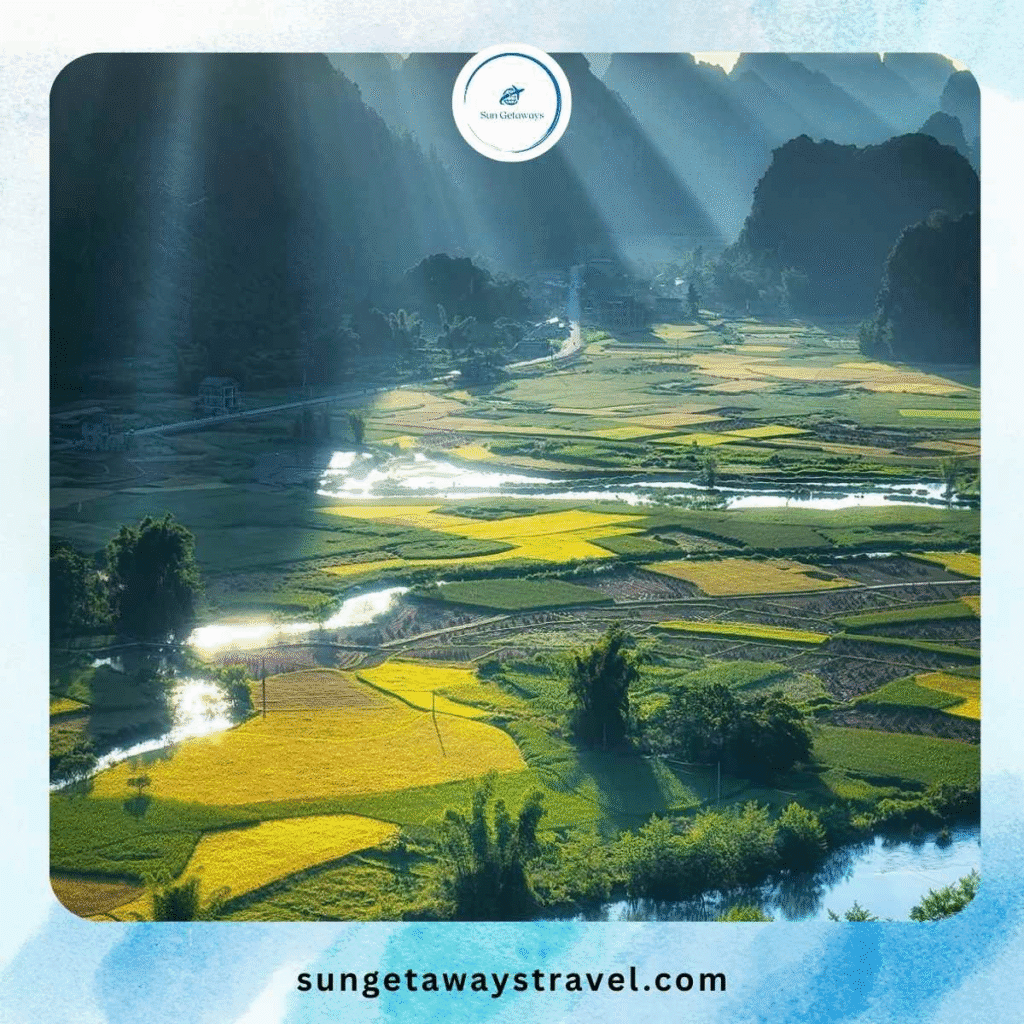

Spring transitions into early summer, bringing warmer days and increased rainfall, ideal for waterfall sightseeing.
- Temperature: 18–25°C (64–77°F)
- Rainfall: 80–150mm per month
- Humidity: 85–90%
- Weather Features: Frequent showers and occasional thunderstorms.
- Activities:
- Trekking in forests and visiting waterfalls with vibrant water flow.
- Boat trips on local rivers for scenic views.
- Exploring flower and fruit markets blooming in spring.
Tip: Bring waterproof gear and plan outdoor trips in the morning to avoid heavy afternoon rains.
Want to plan your trip around Vietnam’s seasonal weather? Discover the best times for trekking, waterfalls, and markets in our Season in Vietnam guide.
2.3 July – September


The peak of the rainy season poses both challenges and rewards for adventurous travelers.
- Temperature: 20–27°C (68–81°F)
- Rainfall: 180–250mm per month
- Humidity: ~90%
- Weather Features: Heavy rainfall, high humidity, occasional landslides in mountainous areas.
- Activities:
- Short guided treks rather than long hikes.
- Waterfall visits are dramatic but require caution near slippery paths.
- Cultural and indoor activities such as workshops or village tours.
Tip: Flexible itineraries and checking weather alerts are essential for safety.
2.4 October – December
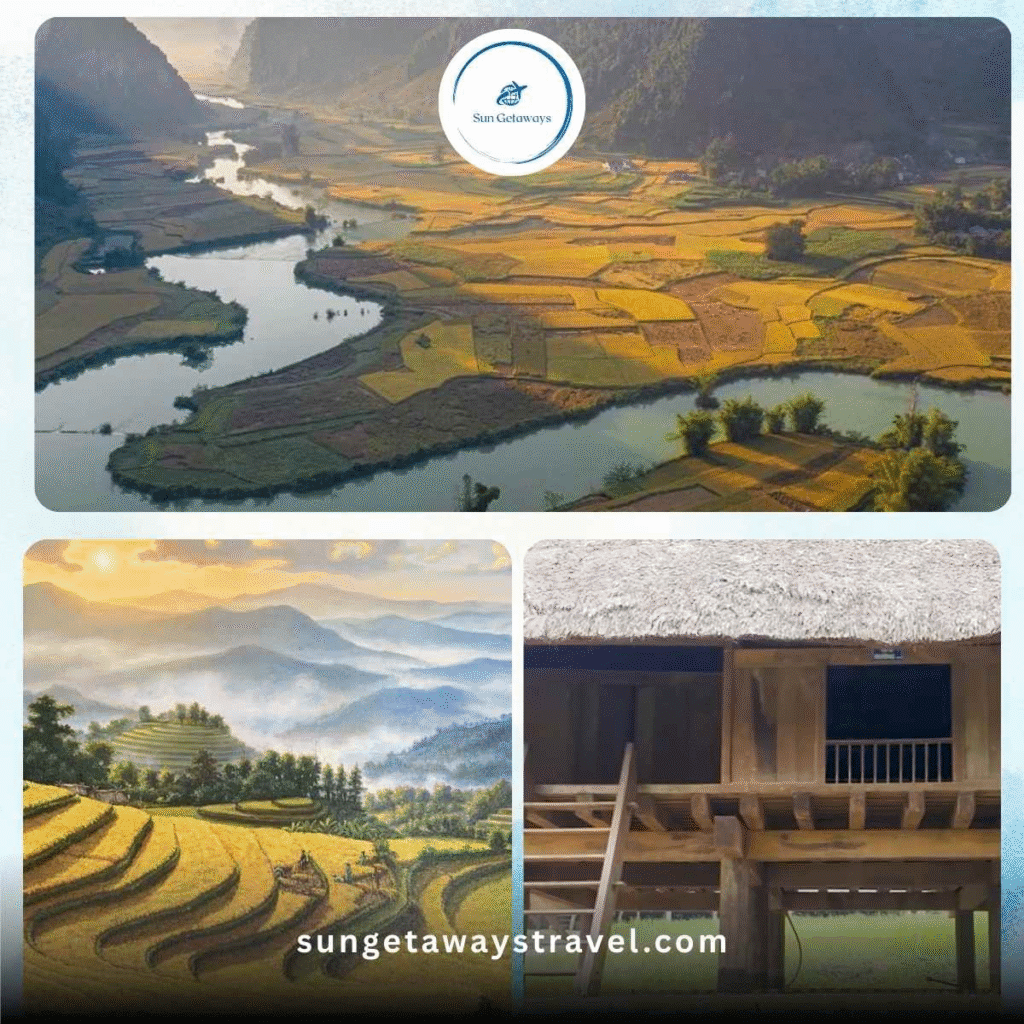

The cool, dry months of autumn and early winter provide the most comfortable conditions for travel and photography.
- Temperature: 12–22°C (54–72°F)
- Rainfall: 30–60mm per month
- Humidity: ~80%
- Weather Features: Clear skies, crisp air, foggy mornings in highlands.
- Activities:
- Trekking, photography, and scenic viewing are ideal.
- Visiting ethnic minority villages for cultural immersion.
- Exploring rural landscapes and agricultural terraces.
Tip: Layered clothing works best; mornings can be chilly while afternoons remain mild.
2.5 Monthly Summary Table: Cao Bang Weather by Month
| Month | Avg Temp (°C) | Rainfall (mm) | Humidity (%) | Recommended Activities |
| Jan | 12–18 | 50 | 82 | Trekking, waterfalls, Pac Bo cave |
| Feb | 13–19 | 60 | 83 | Photography, local markets |
| Mar | 15–20 | 50 | 82 | Spring flowers, cultural visits |
| Apr | 18–23 | 90 | 85 | Trekking, boat trips |
| May | 20–25 | 120 | 87 | Waterfalls, riverside activities |
| Jun | 22–27 | 150 | 88 | Short treks, indoor workshops |
| Jul | 23–27 | 200 | 90 | Rainforest exploration, safety tours |
| Aug | 24–27 | 220 | 90 | Waterfall photography, local crafts |
| Sep | 22–26 | 180 | 88 | Trekking with caution, cultural visits |
| Oct | 18–23 | 60 | 82 | Autumn landscapes, village visits |
| Nov | 15–22 | 50 | 80 | Photography, moderate trekking |
| Dec | 12–18 | 40 | 80 | Winter sightseeing, foggy highlands |
3. Best Time to Visit Cao Bang
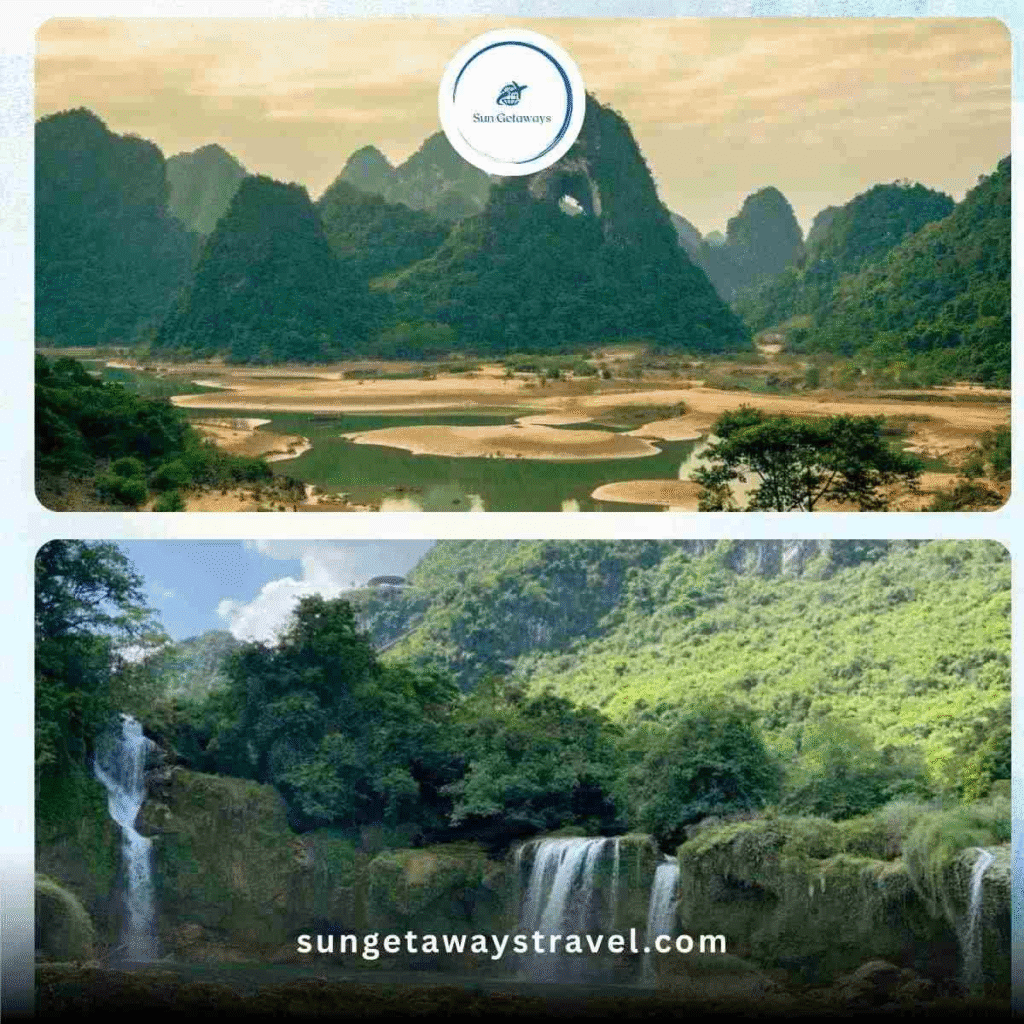

Choosing the right season is critical for a safe and enjoyable trip to Cao Bang, maximizing sightseeing and outdoor experiences.
- Dry Season (October–April):
- Cooler temperatures, low rainfall, clear skies.
- Ideal for trekking, visiting waterfalls, and photography.
- Rainy Season (May–September):
- High rainfall, increased humidity, occasional landslides.
- Waterfalls are most spectacular; rivers swell, offering dramatic views.
Recommendation:
- October–December: Best for comfortable weather and clear skies.
- March–April: Pleasant spring weather and blooming flowers.
Additional Analysis:
- Dry season: safer roads, ideal for long treks and cultural village visits.
- Rainy season: adventurous travelers can enjoy waterfalls at full force but must plan short, flexible trips.
If you want to design a personalized tour tailored to your specific requests, visit Sun Getaways Travel Customized Tour.
4. Tips for Travelers Regarding Weather


Preparation is key to enjoying Cao Bang regardless of the season.
- Clothing: Layered outfits for variable temperatures; waterproof jackets for rainy season.
- Footwear: Non-slip shoes for trekking and waterfall areas.
- Safety:
- Monitor weather forecasts.
- Avoid slippery trails during heavy rain or landslide-prone areas.
- Gear: Umbrellas, waterproof bags, trekking poles, sun protection.
- Accommodation & Transport:
- Select homestays or hotels accessible during the rainy season.
- Consider guided tours for safety during heavy rain.
Pro Tips:
- Always have a flexible itinerary.
- Start outdoor activities early in the day to avoid afternoon showers.
- Respect local advice on weather-related hazards.
Planning the best season for trekking in Northern Vietnam? Discover our 7-Day Adventure Trekking in Bac Ha, Ban Phung & Hoang Su Phi for safe and thrilling experiences.
5. How Weather Affects Local Activities
Weather strongly influences which activities are enjoyable and safe in Cao Bang.
- Trekking & Hiking:
- Dry season ensures firm trails and easy navigation.
- Rainy season may cause slippery paths and trail closures.
- Waterfall Visits:
- Thac Ban Gioc waterfall is most impressive during the rainy season.
- Safety precautions are necessary near fast-flowing water.
- Photography:
- Foggy mornings and autumn colors provide unique photo opportunities.
- Rainy season adds lush greenery but can reduce visibility.
- Cultural & Village Activities:
- Ethnic village visits are more comfortable during dry months.
- Seasonal festivals often align with weather conditions, e.g., harvest or flower festivals.
- Culinary Experience:
- Certain local foods and drinks are seasonal, influenced by rainfall and harvests.
6. Unique Weather Phenomena in Cao Bang


- Fog and Mist: Common in highlands, especially winter mornings.
- Microclimates: Valleys and mountains exhibit distinct rainfall and temperature variations.
- Frost: Occasionally appears in elevated areas during December–January.
- Ecotourism Impact: Unique weather supports biodiversity, enhancing trekking and wildlife observation.
If you want to contact us directly or need quick assistance, reach us on WhatsApp!
7. Conclusion
Cao Bang’s weather varies widely depending on season and altitude, making planning essential for a successful trip. Using Cao Bang weather by month data, travelers can optimize activities like trekking, waterfall visits, photography, and cultural exploration. The province’s natural
Ask a question
Leave a Comment (0)
No questions yet. Be the first to ask a question!


